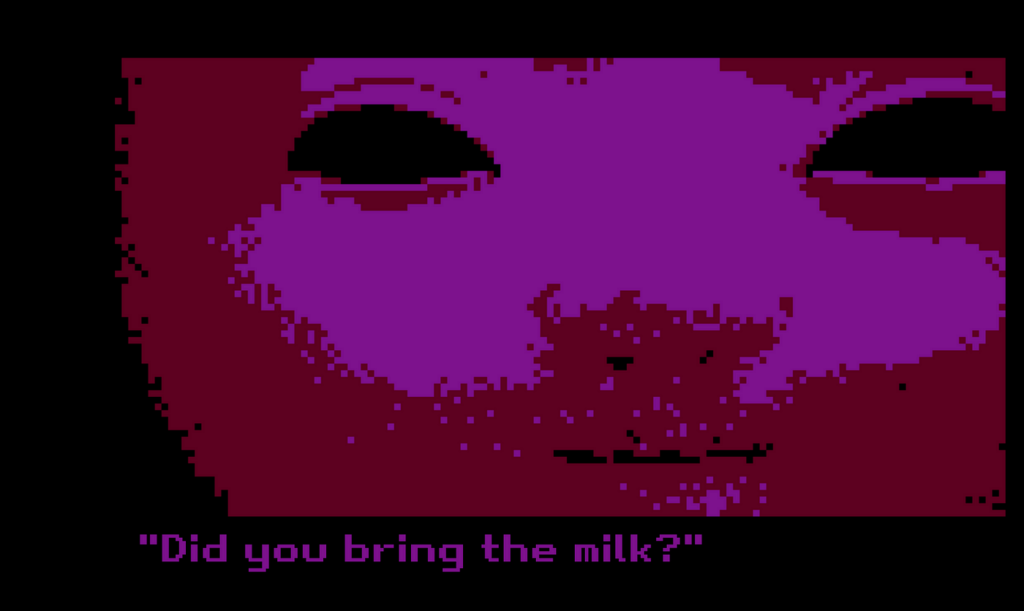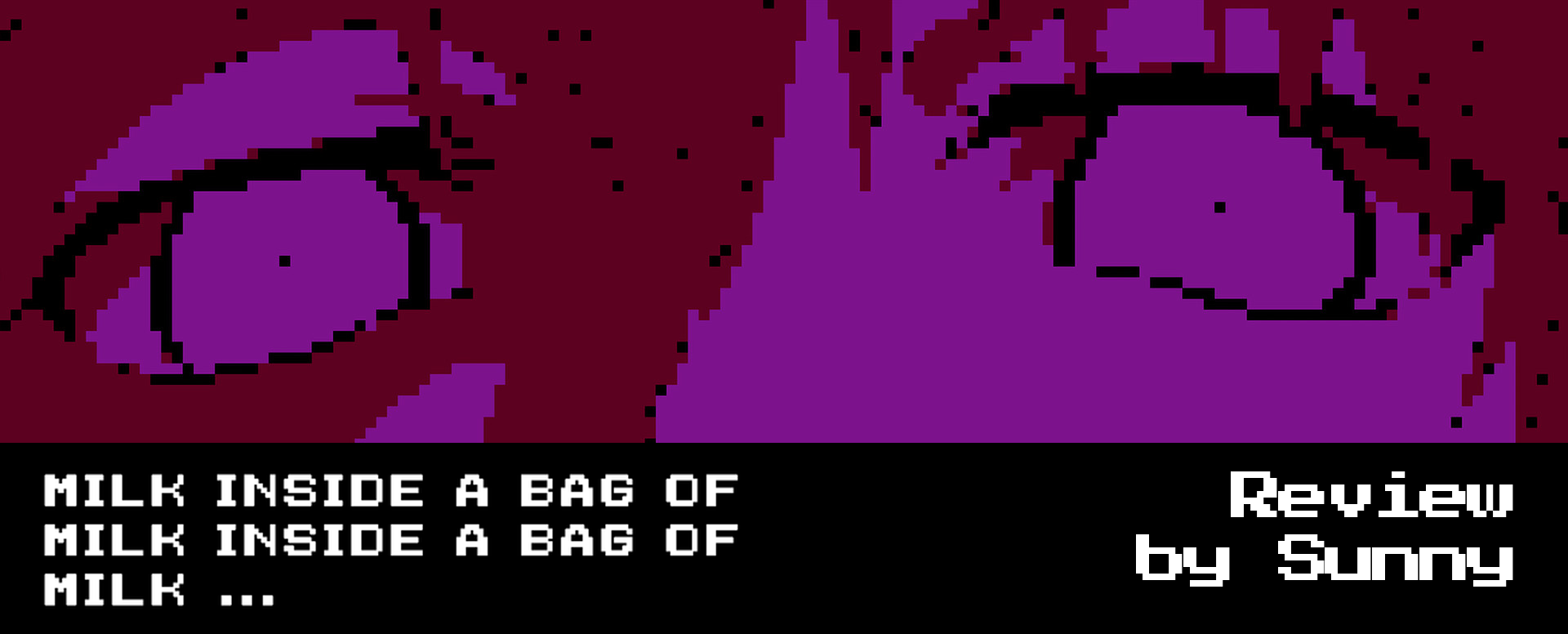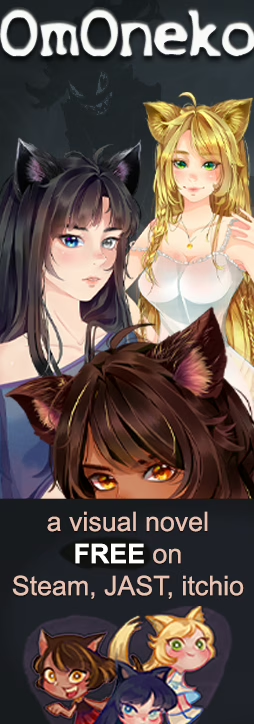Published by Russian developer Nikita Kryukov and released on August 26th of 2020, Milk inside a Bag of Milk inside a Bag of Milk is a short visual novel that delves into the mind of an unnamed disturbed young girl. The story explores how even the most mundane everyday tasks, like buying milk for her mother, can be an immense challenge for her. Simple as it may sound, this abstract narrative offers a disquieting glimpse into the world of someone struggling with mental health issues.
It’s no surprise that this little game has resonated with so many players. It has gained praise from new and veteran visual novel fans for its surreal portrayal of trauma and uniquely distinctive design. This game is truly worthy of all the acclaim it has received. So, join me as we follow this young girl’s adventure to the store to get milk!
A Rundown of Our Little Market Trip

The game begins with a simple request: “Help me buy milk!”
Quickly, we find ourselves accompanying the girl to the grocery store to pick up a bag of milk for her mother. This unnamed protagonist, affectionately referred to by fans as The Girl or Milk-chan, faces numerous struggles along the way. These include her inability to hypothetically speak a sentence to the cashier and her sudden realization that one foot is walking on the asphalt while the other is on the grass. This is where the player steps in, trying to help her pull herself together.
We guide her through these steps (quite literally), but often the player finds opportunities to mock her. Despite this, when it came to choosing dialogue options while speaking to the girl, I couldn’t bring myself to be mean to her. I found her anxiety and introverted behavior very relatable, as I’m sure many others have when playing!
She poses peculiar questions, such as whether there are bears with eyes on the back of their heads or if someone would want to kill an innocent girl carrying a bag of milk. Even after we explain that the world is a cruel place, she simply states that she’s not in that world we speak of. She reflects on how convenient her world is, with traffic lights always turning off when she needs to cross and clouds appearing right when she cries to hide her tears—suggesting that beyond all her inner turmoil lies an easy life curated for her.
I’d like to note here that Milk-chan prefers not to share her diagnosis. Even though she’s fictional, I’ll respect her wishes and won’t delve deep into what she could be suffering from. She wants us to see her for who she is, even if is made up. Isn’t it nice, being a figment of someone’s imagination?
I found that choice very refreshing, especially since it is heavily implied that many of her struggles mirror the developer’s exertions. Of course, it also helps a more broad audience to be able to see themselves in her and her struggles.
But hey…! Today is the first time she was able to get something at the store without any major incident. Isn’t that great? I’m so proud of her. She gives us credit, though I don’t want to take this achievement from her. She became a visual novel character for the sake of going to the store today, with no intention of messing up in front of us, the reader. And it paid off, I would say!
To make it so there are fewer boundaries in our communication, the border around the text box disappears as she gets more personal with her feelings. Another touch that shows this game’s heart, sincerity, and charm.

As a first experience, it felt cathartic. I found our titular character relatable, yet that didn’t take me out of the abstract immersion the game provided. Despite its short length, it’s compelling, and the graphics are also a delight. I’m a sucker for illustrations done with pixel art, and I feel that it fits the tone of the story perfectly.
Keep in mind though–while the game is relatively short, its replayability lies in the different dialogue options and the subtle variations in the protagonist’s responses. This simplicity allows the story and atmosphere to take center stage, drawing players into The Girl’s inner world.
So, what if we woke up and chose violence, deciding to project all our hatred, insecurities, and rage onto this poor girl who just wants to get milk? Being harsh for a change did unlock the other ending to this game, turns out.
Thoughts and Reception

It’s easy to see why this game captured the hearts of its readers. It’s short, perplexing, and ultimately a thought-provoking journey through the psyche of our nameless girl.
The writing is cryptic yet poignant, offering glimpses into the protagonist’s past and her struggles with mental health. This unconventional storytelling method encourages players to piece together the narrative, creating a deeply personal and immersive experience.
Mental health issues can make even regular, day-to-day tasks a harrowing ordeal for some. This game brilliantly showcases how simply existing can become a significant challenge. It emphasizes the intense internal struggle that individuals with personal traumas often face.
Many players, including me, can easily agree that it’s a memorable indie gem that will never be forgotten once experienced. The game is short and compact, yet surprisingly effective in making the player care about the protagonist in the brief time you spend with her. No wonder she’s become adored by many—after all, what would this game be without The Girl herself?
Visuals and Soundtrack

The game employs a minimalist art style, created by Nikita himself. It features stark, monochromatic visuals that perfectly complement the eerie and disorienting atmosphere. The simplistic character design of Milk-chan and the backgrounds effectively convey her scattered perception of reality, allowing the player to feel her confusion and distress. The use of vivid red for text and certain visual elements heightens the sense of unease, making every interaction feel significant and impactful. The cold color palette, retro graphics, and mundane locations create a strange sense of familiarity, adding to the relatability of interacting with Milk-chan’s world. It stands out not just in storytelling but also in its design choices—distorted, disorienting, yet grounded.
The soundtrack, also composed by the developer, is minimal yet effective. It’s composed by ambient noises and haunting effects that enhance the unsettling mood. The use of more silent tunes is particularly powerful, amplifying moments of tension and introspection, while occasional shifts in sound can jolt the player, mirroring The Girl’s sudden moments of heightened emotions.
By the way… If you’re ever in need of a late-night trip to the supermarket for some produce, you can find the soundtrack in its entirety on streaming services like Spotify or purchase it alongside the game on its Steam page for less than a dollar!
The Conclusion of Our Trip

Milk inside a Bag of Milk inside a Bag of Milk aces atmospheric storytelling. It challenges players to empathize with a protagonist grappling with her mental health, offering a raw and unfiltered glimpse into her world. While its puzzling nature, brevity, and unconventional approach may not appeal to everyone, I say it’s a must-play for those interested in indie visual novels and psychological storytelling.
Overall, this game stands out as a poignant and unsettling journey into the human mind, leaving a lasting impression long after the screen fades to the beginning once again—an everlasting loop.
On February 19th, 2021, Nikita Kryukov announced that a sequel was in development. Later that year, on December 16th, Milk Outside a Bag of Milk Outside a Bag of Milk was published. This sequel is noticeably longer and continues the story where the previous installment left off.
Hopefully, I’ll be able to cover that in the future. But until then, thank you for reading!
Much love, Sunny!
If you enjoy our work, please follow us on Twitter for more visual novel content and join the community in our forums and discord server: we’re pretty active there!
In addition, you can also support us on Patreon or by buying us a Ko-fi.












